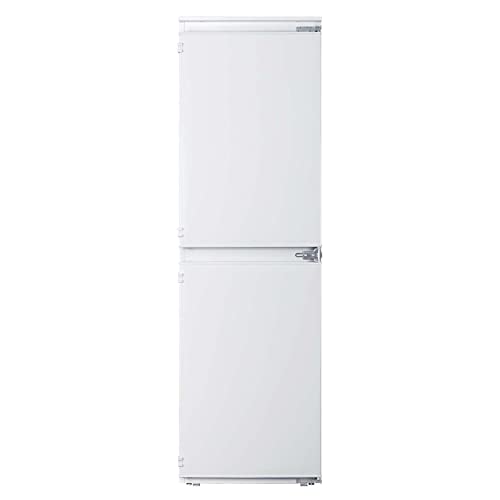What's The Reason Fridges And Freezers Is Fast Becoming The Hottest Tr…
페이지 정보
본문

Understanding Fridges and Freezers: The Essential Kitchen Appliances
Fridges and freezers are 2 of the most important home appliances in modern-day kitchen areas. These home appliances serve a crucial function in food conservation and waste decrease by making sure that disposable items remain fresh and safe for usage. This post looks into the numerous kinds of fridges and freezers, their functionalities, and essential factors to consider for selection and maintenance.
Kinds of Refrigerators
The marketplace uses a range of refrigerator types, each developed to fulfill various customer needs. Below is a list of the most typical types of fridges:
Top-Freezer Refrigerators
- Most typical type.
- Freezer compartment lies above the refrigerator area.
- Typically more affordable and energy-efficient.
Bottom-Freezer Refrigerators
- Freezer is located at the bottom.
- Allows easier access to fresh products at eye level.
- Often includes pull-out drawers for much better company.
Side-by-Side Refrigerators
- Refrigerator and freezer areas are nearby.
- Suitable for narrow kitchen areas and enables easy access to both compartments.
- Typically includes water and ice dispensers.
French Door Refrigerators
- Integrates a bottom freezer with double doors at the top.
- Deals sufficient storage and elegant styles.
- Typically includes functions like temperature-controlled drawers.
Compact Refrigerators
- Smaller sized size perfect for restricted spaces.
- Commonly used in dormitory rooms, small homes, or as secondary fridges.
Table 1: Comparison of Refrigerator Types
| Type | Benefits | Disadvantages | Typical Size |
|---|---|---|---|
| Top-Freezer | Affordable, energy-efficient | Less practical access to the freezer | 14-30 cu. ft. |
| Bottom-Freezer | Easier access to fresh food | Freezer can be more difficult to organize | 19-30 cu. ft. |
| Side-by-Side | Easy gain access to, water/ice dispenser | Narrow vs. storage space | 22-30 cu. ft. |
| French Door | Trendy, large, arranged | More expensive | 20-30+ cu. ft. |
| Compact | Space-saving, portable | Restricted storage | 1.7-5.5 cu. ft. |
Types of Freezers
Freezers are a similarly essential device for food preservation. They are available in various styles developed to fit various family requirements. Consider the following types:
Upright Freezers
- Operate like a standard refrigerator with vertical storage.
- Much easier to arrange with shelves and compartments.
Chest Freezers
- Large, horizontal design typically providing more storage area.
- Maintains temperature levels better during power interruptions.
- More energy-efficient than upright models.
Portable Freezers
- Compact units perfect for outdoor activities or little spaces.
- Frequently used for camping trips or as temporary storage.
Table 2: Comparison of Freezer Types
| Type | Advantages | Downsides | Normal Size |
|---|---|---|---|
| Upright Freezer | Simpler to arrange | Less energy-efficient, more flooring area | 5-20 cu. ft. |
| Chest Freezer | Holds more products, energy-efficient | Harder to organize | 5-25 cu. ft. |
| Portable Freezer | Compact and flexible | Restricted storage capability | 1-10 cu. ft. |
Key Features to Consider
When choosing a fridge or freezer, consumers must remember numerous functions that can improve functionality:
- Energy Efficiency: Look for models with the ENERGY STAR accreditation to minimize electrical power expenses.
- Storage Capacity: Evaluate storage requirements based on family size and consuming practices.
- Temperature Control: Some devices offer digital controls for precise temperature level settings.
- Adjustable Shelving: Customizable shelving enables optimal organization.
- Water and Ice Dispenser: Offers benefit but can use up valuable area inside.
- Noise Level: Sound ratings can influence comfort, specifically in open-concept homes.
Benefits and drawbacks of Having a Fridge and Freezer
While fridges and freezers are important innovations, they also have particular benefits and downsides:
| Pros | Cons |
|---|---|
| Protect food life-span and minimize waste | Need regular upkeep |
| Enable bulk buying and meal prepping | Can be pricey to purchase and run |
| Deal convenience and quick access to food | Occupy significant cooking area area |
Maintenance Tips
To make sure durability and optimum efficiency of fridges and freezers, think about the following upkeep suggestions:
- Regular Cleaning: Clean the exterior and interior regularly to avoid accumulation of dirt and bacteria.
- Inspect Seals: Inspect door seals routinely for leaks to preserve effectiveness.
- Temperature Settings: Keep the fridge at 34-38 ° F and the freezer at 0 ° F for optimum food conservation.
- Thaw as Needed: Chest freezers should be defrosted routinely to maintain performance.
- Clear Air Vents: Ensure that air flow isn't obstructed to improve energy efficiency.
FAQs About Fridges and Freezers
Q1: How long can food be kept in a freezer?A: Most foods can be kept in a freezer for a number of months. Meats and poultry frequently last 4-12 months, while vegetables can last approximately 8-12 months.
Q2: How often ought to I clean my fridge and freezer?A: It is suggested to clean your Uk Fridge Freezer and freezer every 3 to 6 months, or as required when spills occur. Q3: Can I put hot food directly in the fridge?A: It is advised to cool hot food to room temperature before positioning it in the fridge to prevent
raising the temperature level inside the device. Q4: Why is my fridge running constantly?A: This might be due to a malfunctioning thermostat, blocked coils, or door seals that aren't working properly. Fridges and freezers are important
properties to contemporary homes, offering important services for food storage and preservation.
Comprehending the numerous types, functions, and maintenance requirements can help customers select the right home appliances for their requirements and optimize their performance. Embracing energy-efficient designs not only supports sustainable practices however also contributes to substantial cost savings on energy bills, making informed options more crucial than ever.


